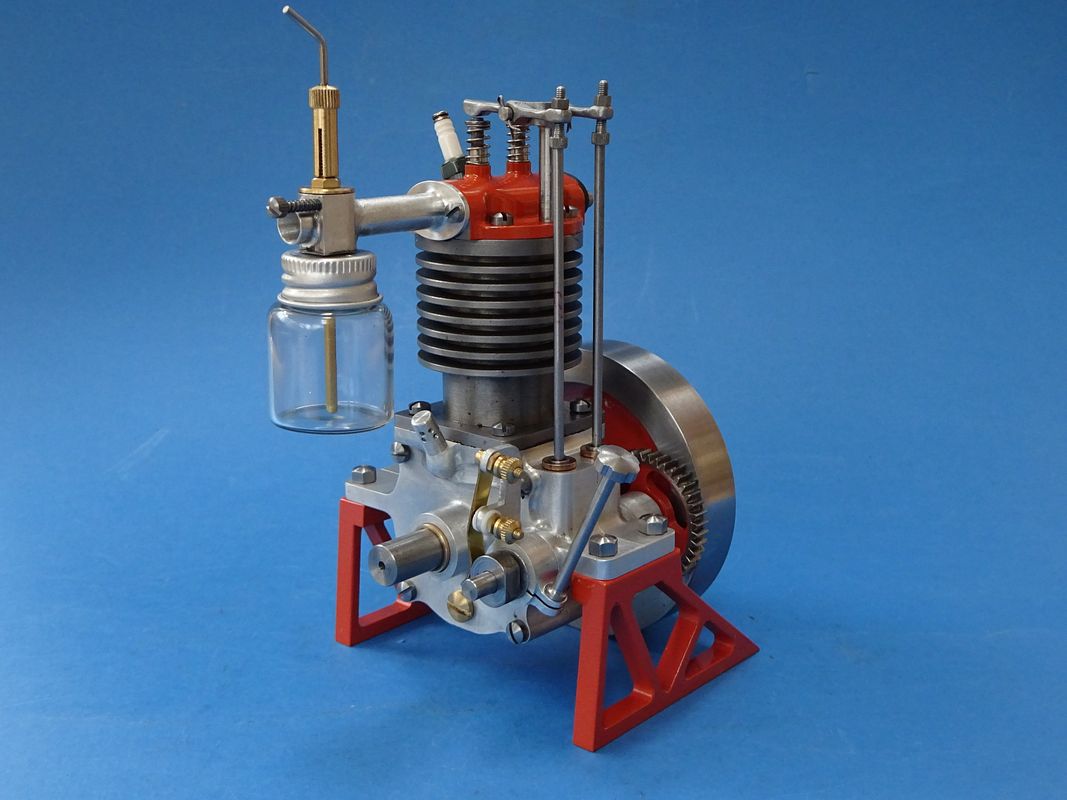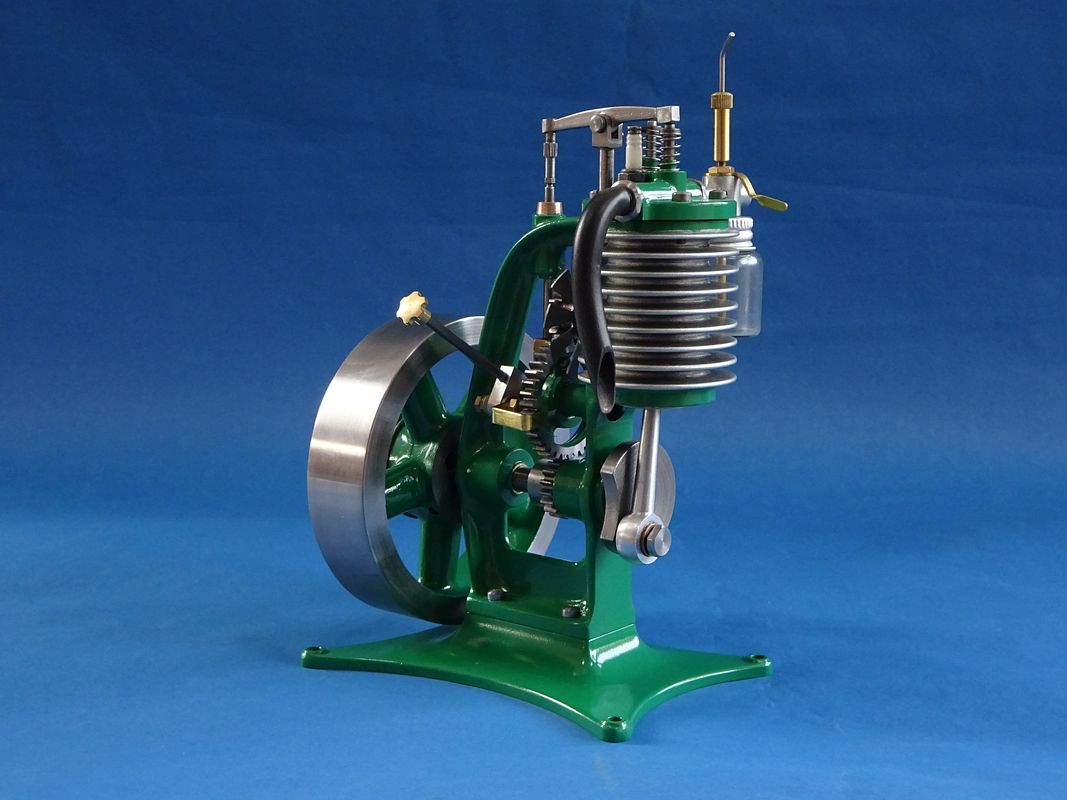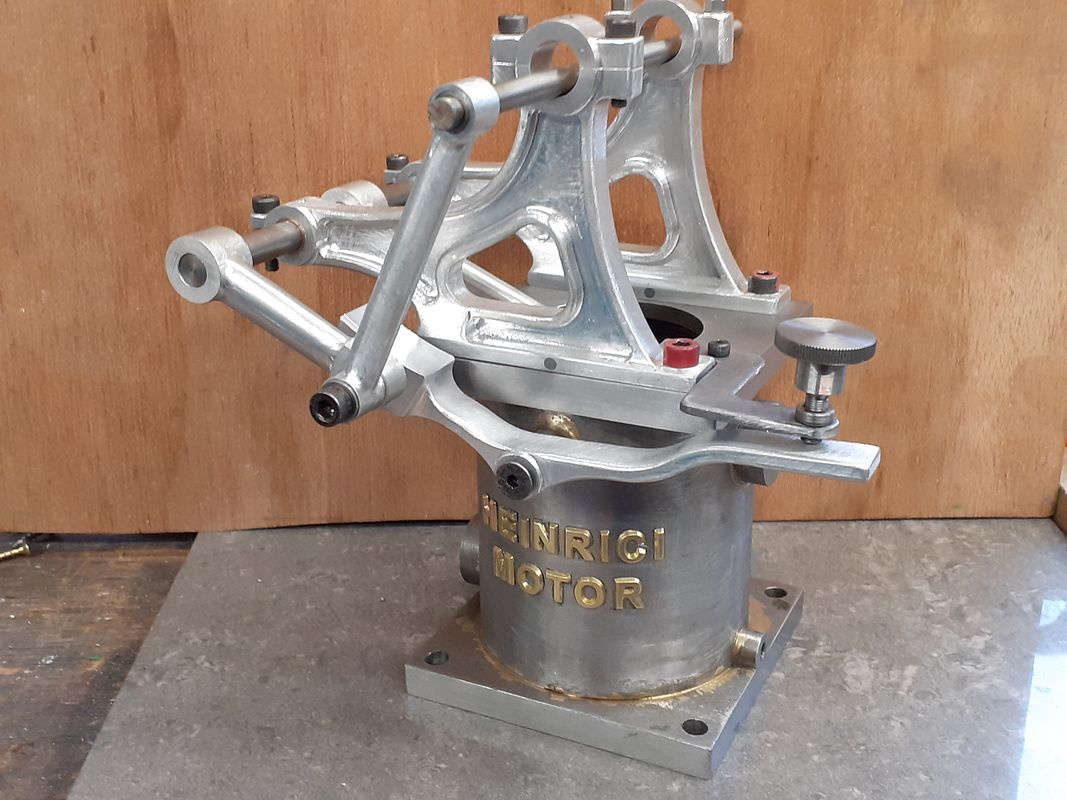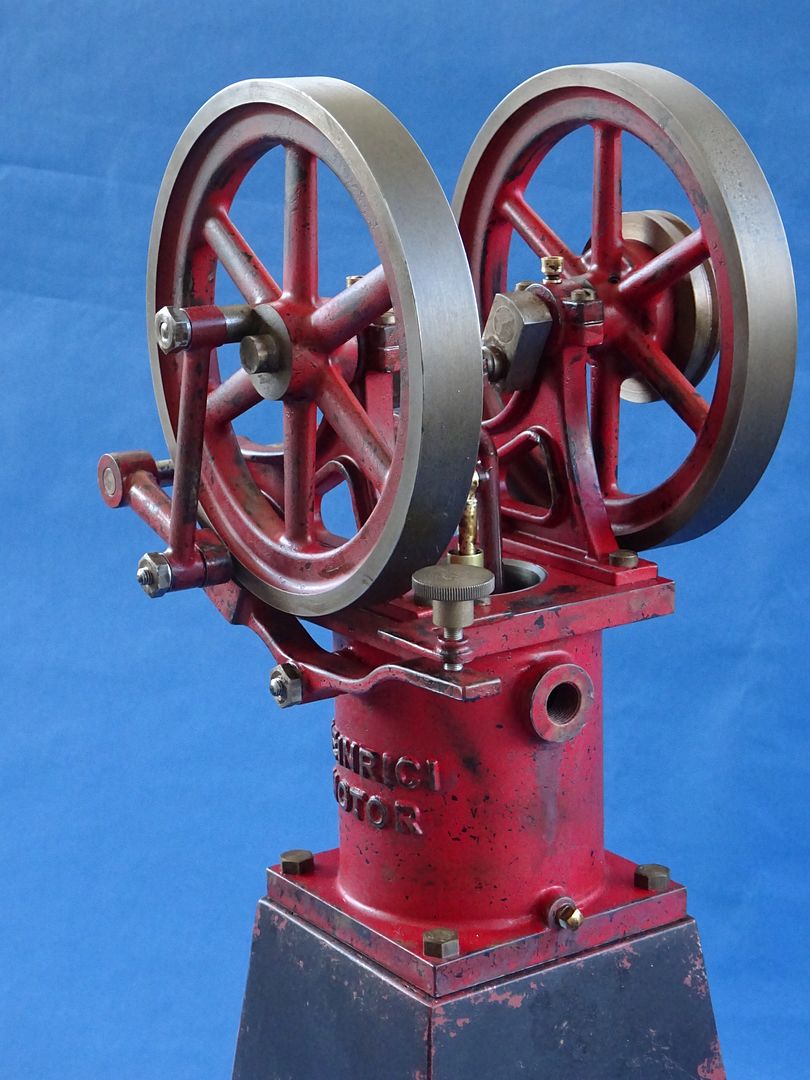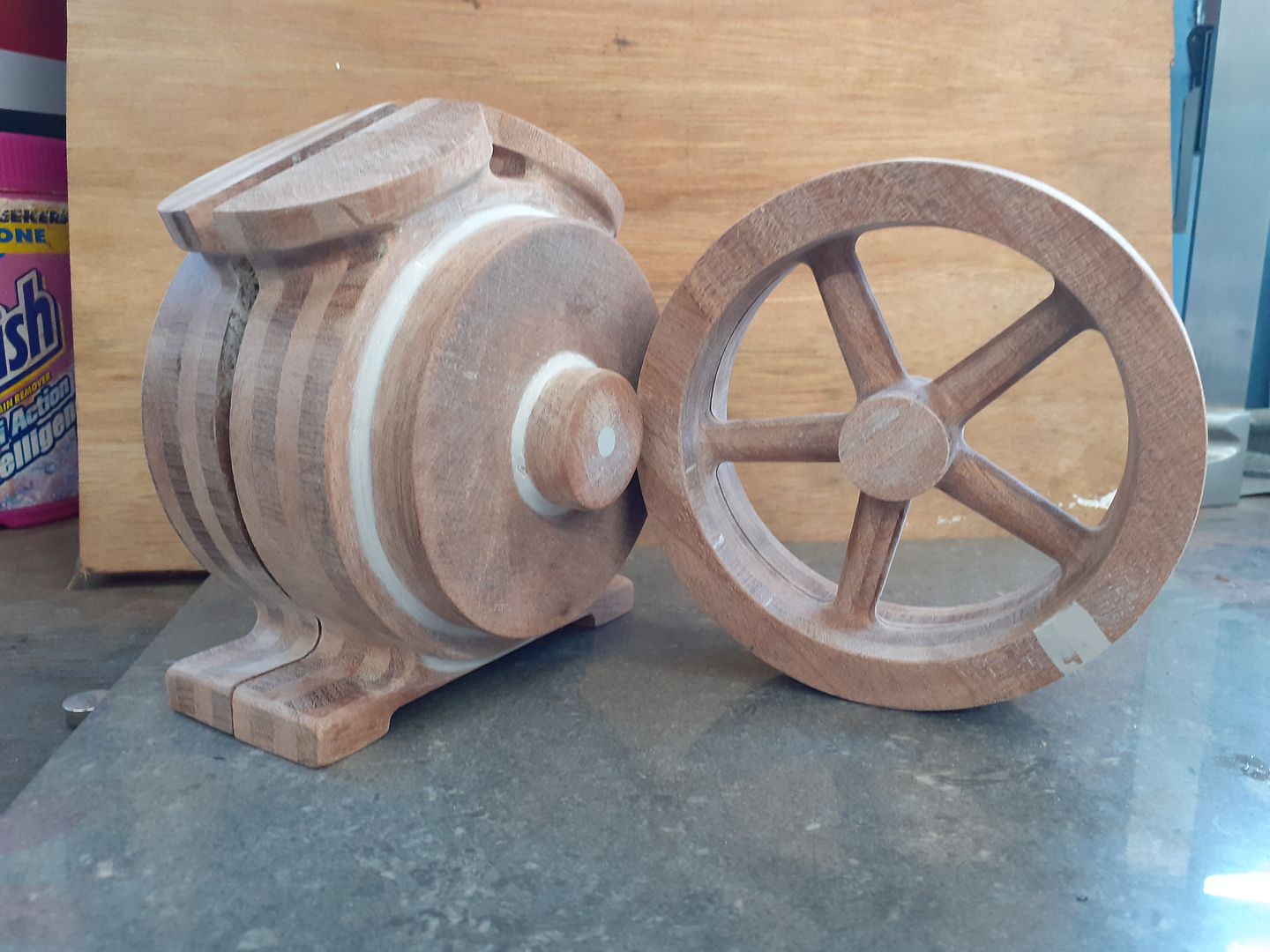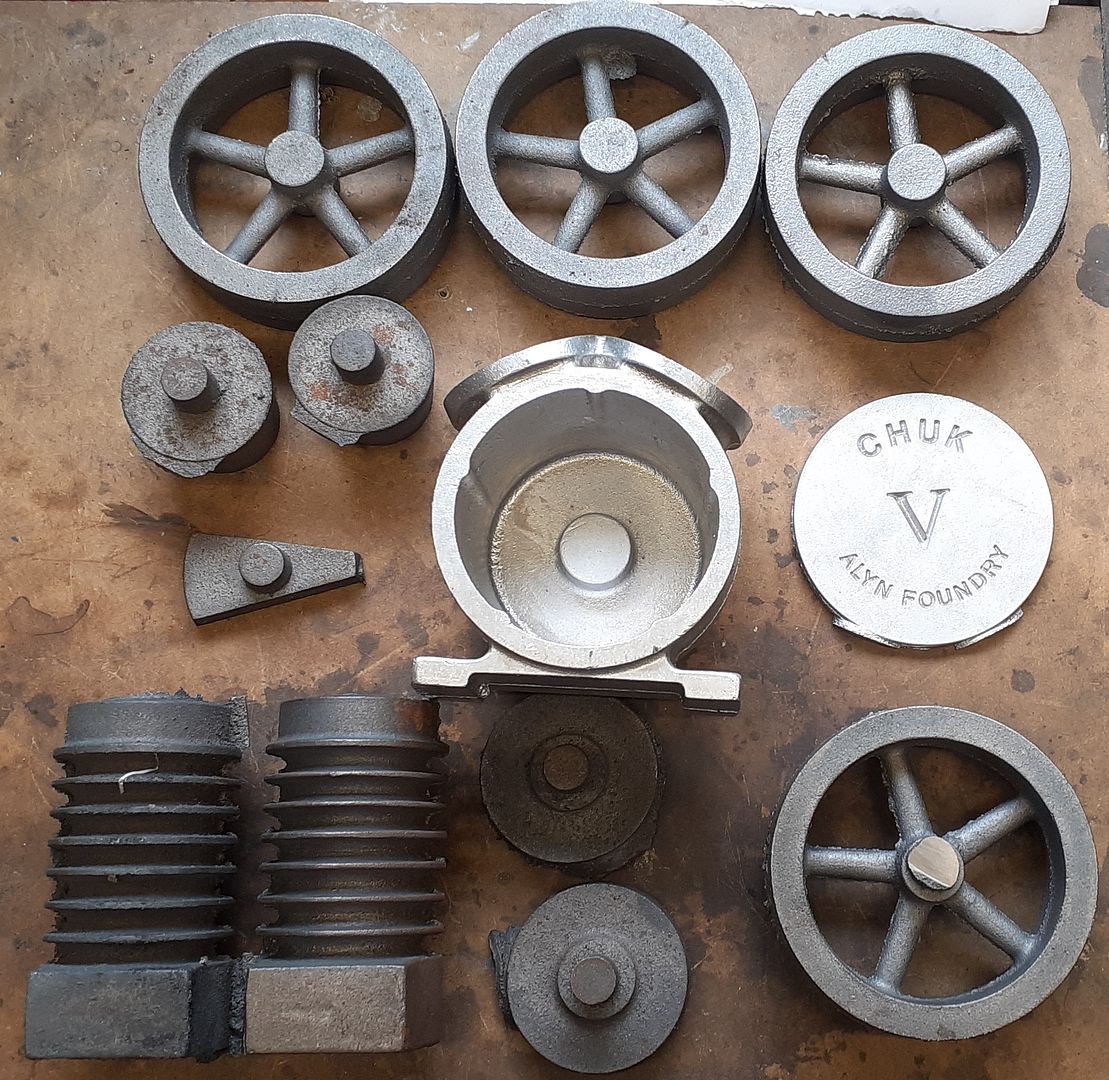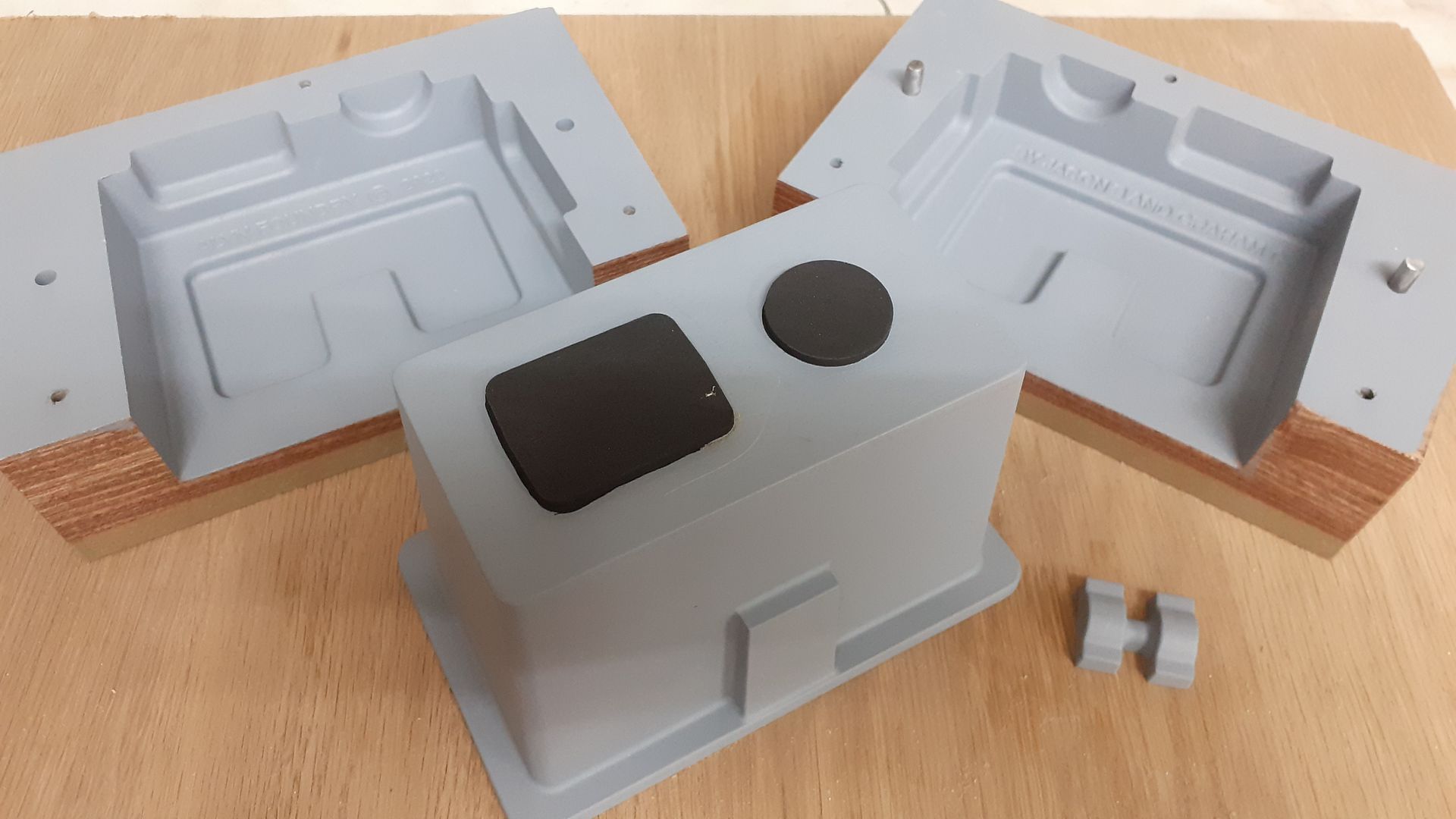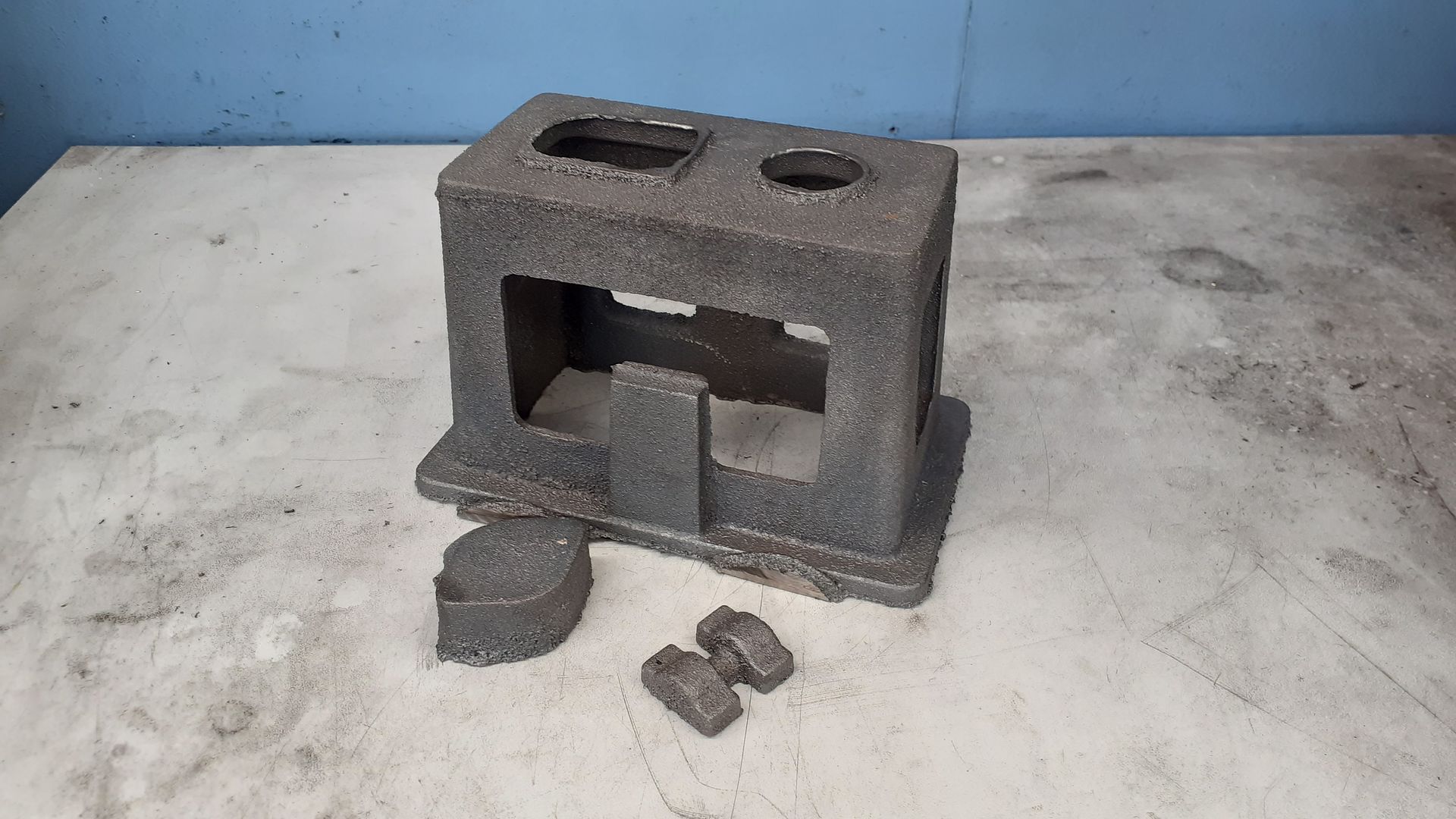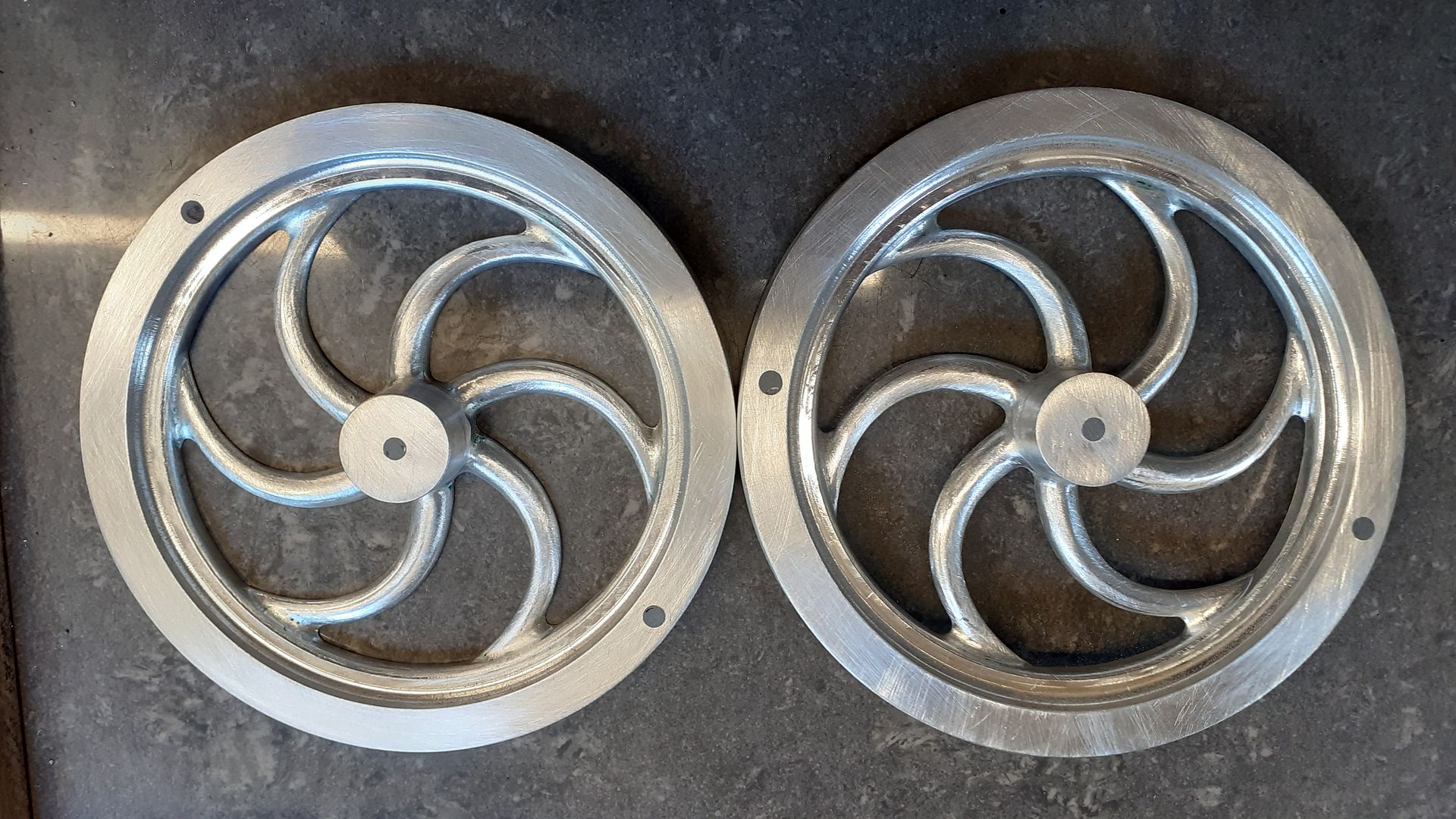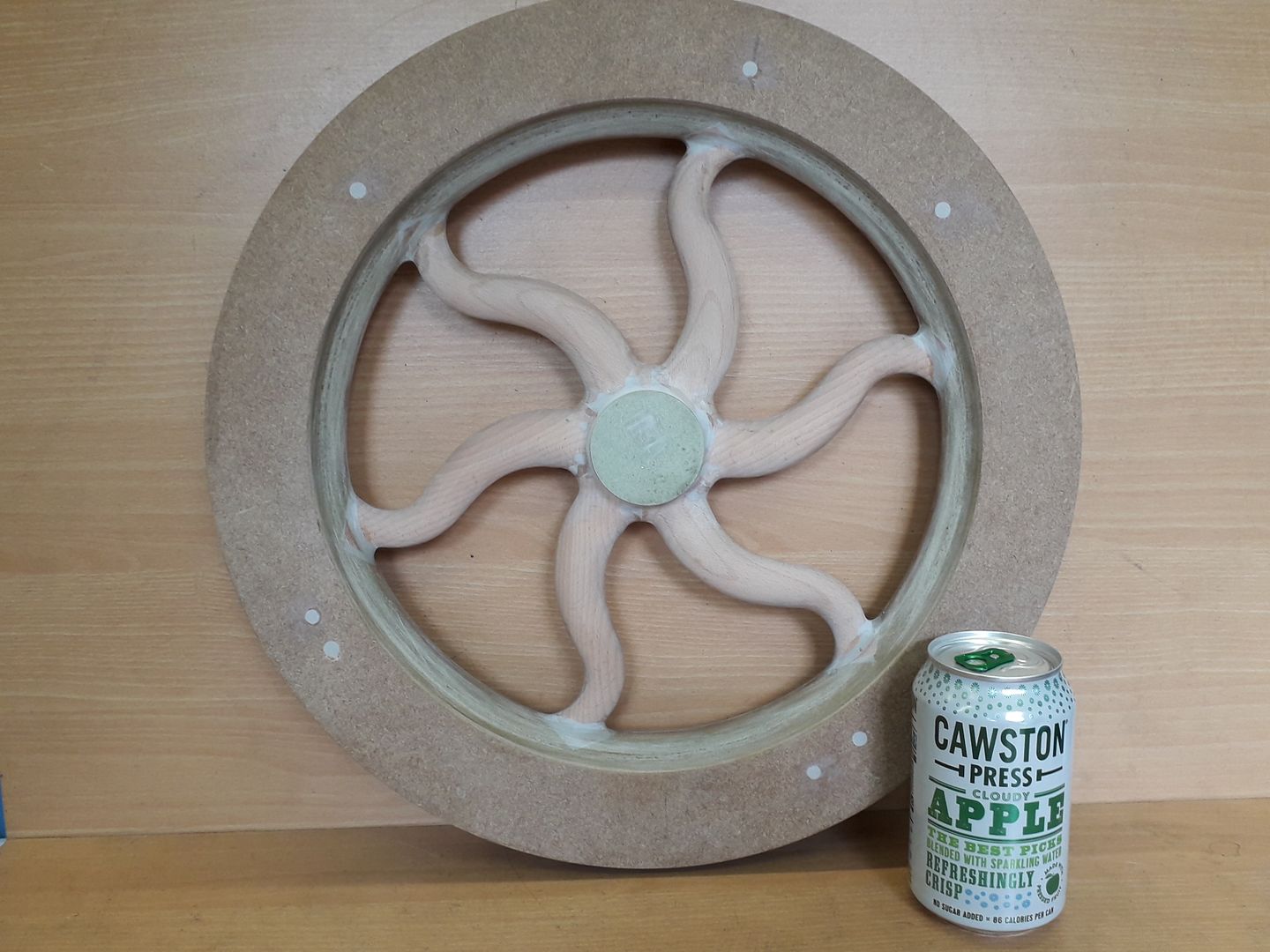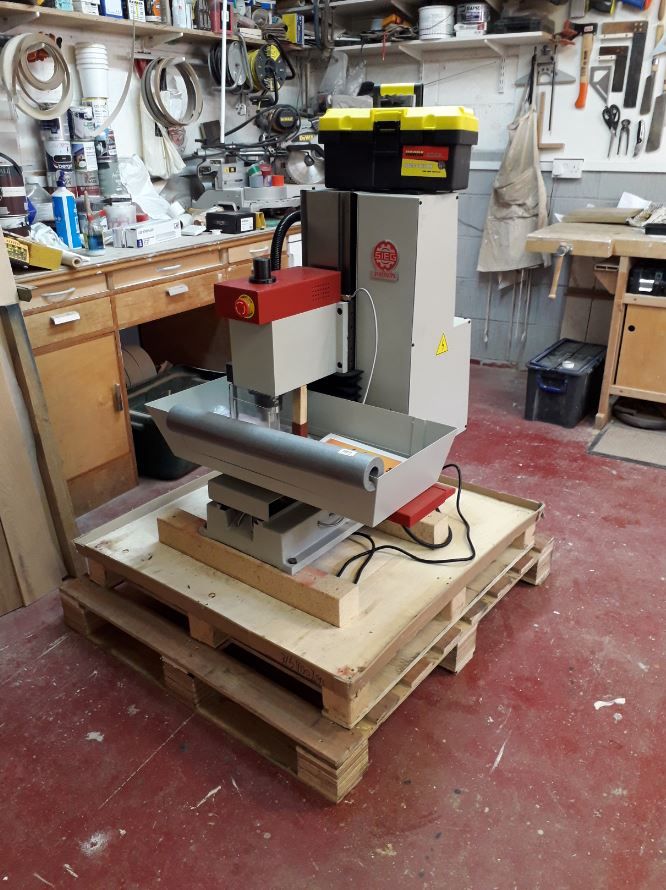KQuiggle,
perhaps you're asking the wrong questions, the questions you might be asking are
is anyone making actual model engine parts with a toy (Sherline,Taig,etc) CNC mill ?
I suspect you'll find the answer to be effectively zero (except for ClickSpring, but
he's the exception that proves the rule, none of us mortals can do what he does
with or without CNC)
of the (few!) people that actually use CNC for model engine parts what do they use ?
I suspect you'll find the answer to be effectively nothing smaller than a Tormach, or Bridgeport clone/conversion and typically much larger like old Haas, etc
if all you want to do is learn CNC then start with (free for us hobbyists!!!) Fusion-360 as the CAD side is a steep learning curve no matter what iron you end up with.
if you get a toy CNC all you might really be learning is the limitations and workarounds for it, which probably won't be relevant to the real machine you might eventually end up with with different controller and different iron.
finally be realistic about what you're going to do with it, I've been building model engines for 30 years now and still don't see how I'd use CNC effectively. I don't think CAD is useful unless you want to machine from bar-stock something that looks like a casting with all its curves, fillets, mounting bosses, etc. and I don't think CNC is useful unless you're going to be making multiple copies of the part.
BUT, if you enjoy discussing options on forums then you're AOK, and if you can't afford the big iron and just want to get your feet wet with a toy you're AOK, its a hobby and what ever turns your crankshaft is AOK !!!
Peter.
Greetings,
Obviously CNC is not a requirement for making any of the classic model engineering projects, I tend to use it mostly for complex shapes that would make my shoulders hurt for days if I had to saw them out and file to shape, or long monotonous pain in the butt jobs. If you have CNC, it can save you lots of time turning handwheels for utterly boring needs. Some folks enjoy turning hand wheels for hour on end, and some will tell me "That's what the hobby is all about, why are you even here?". Probably because there's room for all sorts of folks in our world

I had a clock restoration business, and did parts work for other clock guys who didn't do much machine work. The first time you use a traditional dividing head and mill set up to cut out the spokes and teeth on a 96+ tooth gear it's a great feeling. The third time I said screw it and set up a Sherline four axis CNC mill. Those curvy front plate parts are perfect for scanning, tracing, and knocking out on a CNC mill, although they are every bit as functional and pretty done with a saw and files. Still use the manual approach for cutting pinions, the set up is trivial on a manual mill and it's not a long job. To be honest though, cutting pinions in steel is something I prefer to do on a larger mill, the vibration absorbing nature of the heavier table is beneficial. But if I didn't have a larger mill, the Sherline would do the job fine, just would take a few more passes to get the desired finish. Not model engineering I know, but in the scale of work often encountered in model engineering.
Most folks who make engines or models can't claim to have any reason to make them other than the pleasure of figuring things out, learning something weird about a given engine design, and the pleasure of doing persnickety stuff well. Honestly, what am I going to DO with another model boat? But still, there another one is out on one of the benches and in progress. My Quorn is about 90% done, but I'm having a hard time getting motivated to finish it, these days I'm all about carbide end mills and the motivation to complete the tool will have to involve me being too stubborn to quit rather than driven by need.
For me the building and tweaking part of CNC is more fun than the actual making of parts on a CNC machine. To use a CNC machine, it has to save me time or pain in my crappy shoulders. Hours of sawing or repetitive motion leaves me in pain, others find it relaxing to spend hours cutting out the frames for a skeleton clock, gives them a chance to let the mind wander a bit and just enjoy the feel of a blade cutting well and under their control. Some do this sort of work on a scroll saw. I've done it that way, for some reason it just irritates me to use a scroll saw. Don't ask why, I don't know. Doesn't matter if it's a low end Dremel scroll saw or a high end Hegner, they just irritate me. I love using tiny files and stones to get something just right, but not for hours.
There are two different things going on in this thread though:
1) Is CNC useful for model engineering. Doesn't matter if you're running CNC on a small benchtop or a Boss3 or a Haas VM3, is CNC appropriate in the first place? For making model engineering sorts of projects from casting kits or those happy with barstock sorts of engines, the answer is likely no. Unless you just like redrawing plans in a CAD package and playing with CNC. But I would say that for most model engineering folks CNC is a sort of neat special tool that for those so inclined adds capabilities to the shop. I would never claim it is a necessity. As a sub part to this, it's really hard to just say CNC. If you make lots of model artillery, you might have a manual mill but a CNC lathe. If you build old style Man Of War ships with 84 cannons you might lust for a CNC lathe. Model rail folks might do better with CNC in the plastic side of the world, be it FDM, resin, or both. I like to cut out model boat, plane, and structure parts using a laser. A engine sitting naked may be interesting, in some context such as running a scale thresher or saw it might be more interesting. The window dressing might benefit from some form of CNC, even if it's just cutting out thin stock on one of the flat bed cutters sold in the fabric and scrap booking stores. They do work well for cutting gaskets!
If I were inclined to build some of the very complex engine projects seen on this site, I'd be looking really hard at doing a lot of it using CNC. Making a radial engine I'd want every part that should be interchangeable to be so. CNC doesn't guarantee this, but it makes it a lot easier to get there. Making something once is nice, getting the dimensions dead on is satisfying. Doing that 9 or 18 times close to perfectly for a radial engine is fairly demanding. I like to stack the odds in my favor whenever possible.
2) Small machines. The old anything smaller than X is a toy. If you restore vintage aircraft, odds are most machines are toys and everyone's shop is too darn small. If you restore watches, a Bridgeport isn't of much use. I use my SB10 less often than I use my Sherline and Taig manual lathes. Not because the SB isn't in very good shape and nicely tooled up, but because my interests lead me into doing stuff that requires a headband magnifier in some cases. I like small projects. Not necessarily easy ones, but physically small. It's nice to pick up a project with at most two hands, rather than having to use the chain hoist on the overhead rails. I can't feel what's happening with a 0.25 mm cutter on my larger mills, unlike on the Sherline mill. Saying any machine smaller than X is a toy is like saying any vehicle smaller than an F350 is a toy. Not everyone pulls 10K lb trailers or is 6'5" tall. Some folks find Fiestas and Scions just fine for their needs, some folks haul heavy stuff and livestock in hard conditions.
Are Taig or Sherline manual or CNC machines perfect? Heck no, they are OK to darn good and surprisingly capable within a certain price and size range. As Warren Buffet says, price is what you pay, value is what you get. I can't afford a Kern 5 axis CNC mill or a Tornos Swiss Lathe. I'm probably not smart enough to figure out tooling a Swiss lathe anyway, and it can take a day to set one up so you better need a lot of whatever the part is. But for a million bucks, they will let you do Sherline and Taig scale parts in a very flashy way! PocketNC would be interesting if I started building really complex stuff though, expensive (ish) at $6500 but not insanely priced and 5 axis, but for small parts only. For my interests, it would be a better fit than a Tormach 440.
If you enjoy putting an older machine back in good running order, particularly the oddities of older CNC machines, that's great. I know guys who have spent a year getting old Matsura, Puma, and Haas stuff back into good condition and working well, Good for them, not for me thank you. I've played that game in the manual machine world, and in the benchtop cnc world (EMCO small lathes), just not something that fills me with joy at this point in my life.
Oh Well, lot of different ways to get from point A to point B eh?
Cheers,
Stan






![MeshMagic 3D Free 3D Modeling Software [Download]](https://m.media-amazon.com/images/I/B1U+p8ewjGS._SL500_.png)




















































![DreamPlan Home Design and Landscaping Software Free for Windows [PC Download]](https://m.media-amazon.com/images/I/51kvZH2dVLL._SL500_.jpg)


